The Old English Sheepdog, sometimes called the “Bobtail,” is a shaggy, goofy dog. Known for their profuse coats, these beautiful dogs have an undeniable appeal — it’s something to do with their rustic looks and gentle demeanor. However, don’t let that make you underestimate their athleticism. These dogs make ideal companions only when they are given the opportunity to blow off steam. Read on to learn more about the Old English Sheepdog.
Description of the Old English Sheepdog
Despite being called “sheepdogs,” this breed never really dealt with sheep. Instead, it was their duty to herd cattle. They are also not that old or very English. The Old English Sheepdog was bred about 300 years ago, and contains Russian, European, and British blood.
Interestingly, some farmers used to shave these dogs to make yarn. Perhaps that’s where their confusing name came from! Indeed, these dogs are so hairy that it’s quite unusual even to see their eyes. When visible, the eyes appear as standard brown or a beautiful blue.
The Old English Sheepdog has a lumbering gate, and big bones accentuated by a heavy coat. However, these dogs are also surprisingly agile. This aspect of their herding past persists. Of course, today they are more commonly used as boisterous lawn ornaments than farmhands.
Their double coat usually comes in a combination of white and various shades of grey. Standard colors are blue, blue grey, blue merle, grey, and grizzle.
Life Expectancy and Size
The Sheepdog is prone to some unique health problems, but most are minor. Still, they are not the most long-lived dog around. Standard life expectancy is between 10 and 12 years.
Of course, this is quite typical of large dogs. This breed is not one to hide a small frame behind a profuse coat. They are quite stocky and have surprisingly long legs.
These dogs stand between 21 and 22 inches at the shoulder, and weigh between 60 and 100 pounds.
Protective Ability
This breed makes a great watchdog. Their bark is quite sharp, with a depth befitting their size. However, they are not as likely to overuse their loud voices as many small dogs. While the Old English makes a smart, capable guardian, this sensitive breed does not make a good guard dog.
Many Sheepdogs are quite timid, especially when not properly socialized. They simply do not have the protective instinct, which honestly can be a good trait in most situations. Instead of protectors, these dogs make great companions.
Training
These dogs are quite capable learners when paired with a proficient trainer. They have particularly good memories, and are likely to recall even the shortest of training sessions.
The most difficult part of training an Old English Sheepdog is keeping his attention. Although not exactly flippant, this breed learns quickly and can easily become bored.
These dogs are also extremely easy going and commands often go right over their smiling faces – making it seem like they’re ignoring you when in fact they’re just happy to be around you. Of course, training is very important to keep these large and shaggy dogs as manageable as possible.
It can be fun and rewarding to train an Old English. Keep training sessions short and varied. Avoid becoming monotonous with commands, and show these dogs that learning is fun. They respond extremely well to positive, rewards-based training. Keep challenging them and you’ll be surprised how quickly they rise up to meet your expectations!
Energy Level
The Old English is an adaptable breed with variable energy levels. Most of these dogs need at least an hour of exercise each day to stay sane. It is wise to provide even calm individuals with the same amount of activity to maintain their health and decrease their chances of obesity.
Thankfully, these dogs are usually able to stay relatively calm in the house. They may still accidently knock over family heirlooms or slobber everywhere, but they won’t race around like some high-energy breeds.
What Living with an Old English Shepherd is Like
Most owners choose this breed because of his striking looks. However, these dogs are not a good fit for someone looking for a decorative houseplant!
The Old English is a boisterous, bouncy breed with long legs and a slightly clumsy gait. They need regular activity to remain happy, and space to stretch their legs without becoming problematic. Owners living in confined areas may find this breed difficult to manage.
That being said, these dogs can be great family pets. They are usually great with kids, especially older ones that will not be intimidated by their size. Most Old English get along well with other family pets. In fact, canine friends can help this breed cope while their owners are at work.
Early obedience and socialization training are important, as with all breeds. Some Sheepdog are timid with strangers. Introduce them to many places and things as puppies to help them become well-adjusted adults.
Care of the Old English Sheepdog
These are attractive, gentle, and athletic dogs. Their biggest care requirements come in the form of grooming.
Environmental Needs
The Old English Sheepdog definitely has enough hair to stay warm in winter. After all, they were used as farm dogs in Britain’s notoriously inclement weather. However, they are not so well adapted to hot temperatures, and can easily overheat. It is advisable to clip your Sheepdog in extreme temperatures. Of course, always provide plentiful shade and cool water.
Exercise Needs
These dogs have moderate exercise needs. Most importantly, they should receive regular opportunities to run around and stretch their legs. This can come in the form of supervised time in the yard. They may also enjoy brisk walks or jogs. Ideally, the Sheepdog should receive one hour of exercise each day at minimum. These are not apartment dogs.
Many Old English Sheepdogs enjoy playing games like fetch with their families. This can help to keep them engaged both mentally and physically. These dogs are quite social and will particularly appreciate the time you take to entertain them.
Shedding and Grooming
It is a big commitment to take on the grooming needs of an Old English Sheepdog. At base, these hairballs need to be brushed every other day to keep their coats healthy and avoid matting.
For family pets, clipping can be a smart choice. This makes these dogs significantly lower maintenance. However, they will still need to be brushed at least a few times a week. If you do not want to clip the Old English, consider trimming around the feet and face. Taming these problem areas will make your life much easier.
Despite the hair, these dogs are only moderate shedders for most of the year. They will shed more profusely seasonally throughout the year.
Ideal Home Environment
This breed is perfect for the family with a lot of space. Although in need of regular exercise, they are not manic. These social dogs love people and get along well with other dogs. They are generally perfect for older children.
An ideal owner will take the time to socialize the Old English Sheepdog as a puppy. This can help avoid any trouble with timid behavior. It is also important to take the Sheepdog’s grooming needs seriously. These beautiful dogs are not without their maintenance!
Health Concerns
This breed has many unique health problems, but most are not life threatening.
Many Old English Sheepdogs face serious hip problems, especially as they age. Maintaining their muscle strength can help avoid issues.
Eye problems are not uncommon, especially with the retina and cataracts. Thyroid issues, heart problems, and deafness also plague the Old English Sheepdog.
Thankfully, two deadly diseases that used to plague this breed (Cerebellar Ataxia and Ciliary Dyskinesia) now have genetic testing options. Responsible breeders will screen their dogs to avoid any issues. Ask to see your breeder’s testing records before putting a deposit down or taking home a puppy.
Behavior Problems
This breed is social and can demand attention. Mostly, this is cute, but can become frustrating for some owners. Understand that you are committing to a dog that can at times be needy. The Old English has a large frame, and hair that can easily create a mess. This breed is not for the prudish!
Like many intelligent breeds, this dog can become anxious or nervous if inadequately exercised, trained, and socialized. This dog needs its humans to spend consistent time and energy on him to remain happy and well-adjusted.
The Old English Sheepdog is also known for a loud bark. They are not as vocal as many other breeds, but when they do bark it may frustrate the neighbors.





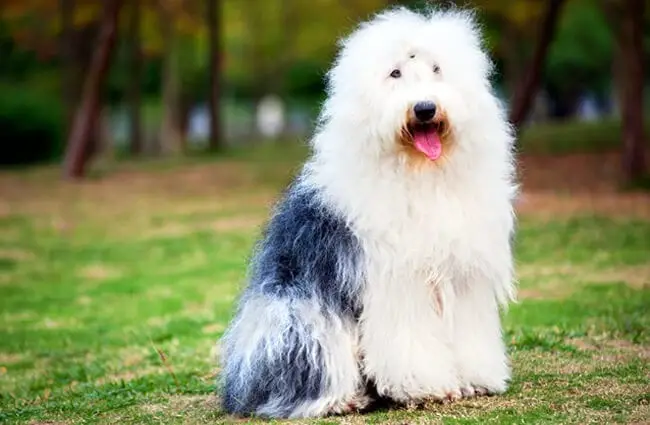
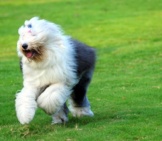
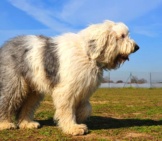
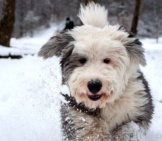
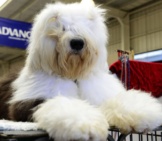
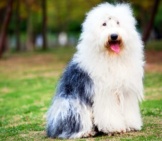













![Red Angus Closeup of a beautiful Red Angus cowPhoto by: U.S. Department of Agriculture [pubic domain]https://creativecommons.org/licenses/by/2.0/](https://animals.net/wp-content/uploads/2020/03/Red-Angus-4-100x75.jpg)

